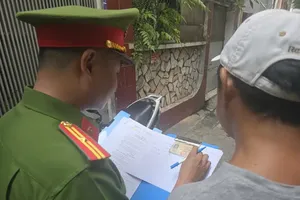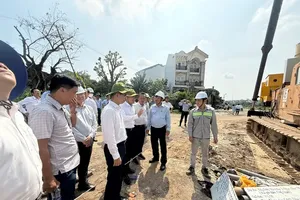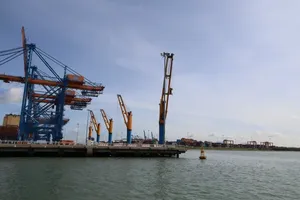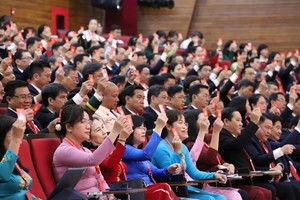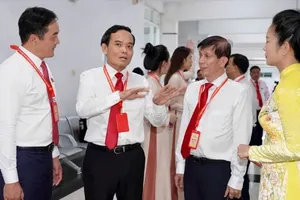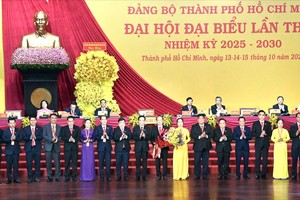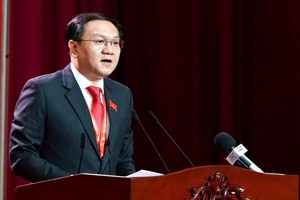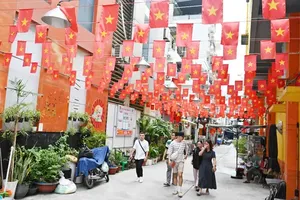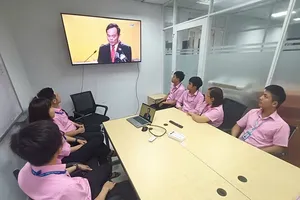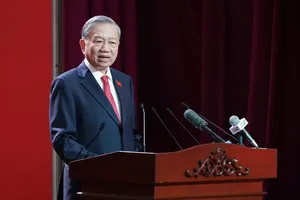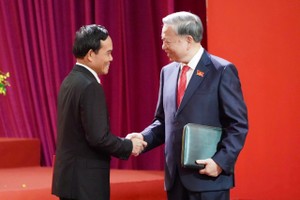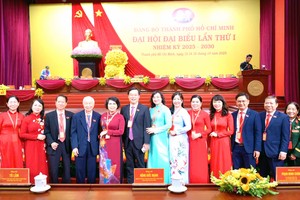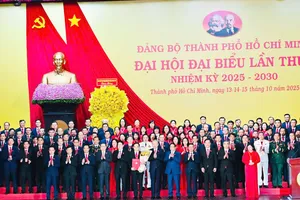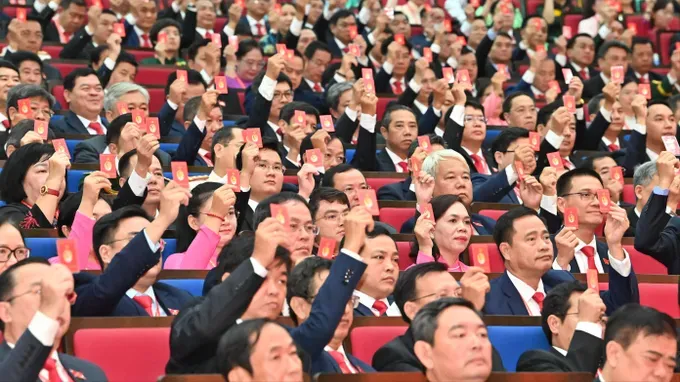
Permanent Vice Chairwoman Truong Thi Bich Hanh of the HCMC Fatherland Front Committee commented that over the past five years, the HCMC Fatherland Front system has presided over more than 10,000 supervision sessions and public conferences, contributing to 1,506 legal documents and gathering thousands of opinions on everything from urban planning to social welfare.
The People’s Inspection and Community Investment Supervision Boards alone conducted over 3,000 oversight activities. These numbers clearly demonstrate the active role citizens play in social governance. It's a testament to the fact that every policy in HCMC is aimed at one thing: the public good, ensuring people can participate, supervise, and ultimately enjoy the fruits of development.
Looking ahead, the supervision work must be linked with public mobilization. Every policy will be people-centric, with citizen satisfaction as the ultimate benchmark. This requires a radical overhaul of different methods. It’s crucial to be less bureaucratic and more attuned to people’s real-life needs, fully embracing digital transformation to expand online feedback.
The Committee is committed to enhancing the quality of social supervision, focusing on issues vital to daily life and the city’s strategic goals. Its mission is to innovate for a clean, strong government, ensuring every policy is for the people, propelling HCMC into the smart, modern city.
Director of the HCMC Department of Science and Technology Lam Dinh Thang stressed on forging a world-class innovation hub. Science, technology, and innovation have proven themselves to be powerful engines of HCMC’s growth. Total factor productivity (TFP), a key indicator of technology’s contribution, is projected to hit 59 percent by year’s end and will remain a dominant driver for the next five years.
The digital economy is booming, contributing 22 percent to the GRDP in 2024 and expected to reach 25 percent in 2025. The city now ranks second nationwide in digital transformation and innovation, has climbed to 30th globally in blockchain, and boasts the fifth-largest startup ecosystem in Southeast Asia.
These impressive results didn’t happen by accident. They are the fruit of a persistent, multi-pronged strategy, including special policies to attract top talent and major investment in the high-tech sector. The good news keeps coming. G42, a major tech group from the UAE, is reportedly planning a nearly US$2-billion investment in an AI super data center right here in HCMC.
The city is also developing its high-tech parks and piloting a “public-public” partnership model to invest in local universities, with the goal of propelling Vietnam National University-HCMC into Asia’s top 100 by 2030.
These efforts are paying off. In the first half of 2025 alone, the science and technology sector attracted $1.6 billion in FDI, accounting for 40 percent of the city’s total investment. HCMC is also laser-focused on developing its digital workforce; to date, over 40,000 civil servants and hundreds of top students have received AI training, all supported by a robust “four-house” network connecting the state, schools, businesses, and investment funds.
The goals for 2030 are clear, with a TFP contribution of at least 60 percent, a digital economy that makes up 30-40 percent of GRDP, and the establishment of at least five international-standard research centers as HCMC becomes a truly world-class innovation hub.
Director Truong Minh Huy Vu of the HCMC Institute for Development Studies mentioned the critical focus on connected infrastructure. He explained that growth is only meaningful if it’s accompanied by macroeconomic stability and social harmony.
Vietnam’s own history is the clearest proof. When growth is too rapid, it can lead to inflation and inequality. Therefore, HCMC’s path must be built on a foundation of stability and sustainability. To achieve its current rapid growth targets of 8.5 to 10 percent, the only way forward is to expand the scale of total social investment.
In the medium term, the city needs to mobilize around VND3 trillion ($118 billion) from public, private, and consumer sources. For the long haul, the focus must shift to stimulating supply by creating a transparent business environment that encourages entrepreneurship and innovation. HCMC is well-positioned for this, with its large, educated population and highly developed port and service infrastructure.
However, HCMC still faces limitations, chief among them being weak infrastructure connectivity. To hit double-digit growth, the city must make breakthrough moves in its institutions, its economic model, and especially in its strategic and digital infrastructure.
While the completion of major projects like the new ring roads and expressways is a bright spot, bottlenecks are still a glaring problem. As HCMC moves forward with its “3 regions, 1 special zone” framework, it must prioritize the development of connected infrastructure. This means investing in railways to move people and goods between production zones and, just as crucially, pouring resources into the digital infrastructure that will be the indispensable foundation for its future International Financial Center.

